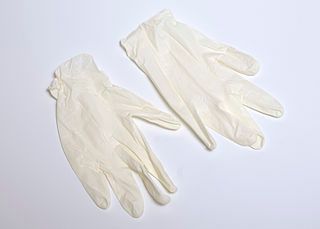From Guest Blogger Amy Morin: Is the Medical World Becoming Greener?
Medical practices have an opportunity to make a big difference in the environment by going green.
Not only will going green save the environment, it can also save medical practices a lot of money.
Benefits of Going Green
Hospitals are the second largest producers of waste, right after the food industry, according to researchers at Johns Hopkins University School of Medicine. Hospitals and doctor’s (doctors’? – ed.) offices throw away everything from latex gloves to operating tools.
However, with some extra effort, the medical community doesn’t have to produce that much waste. Small steps, such as using recycled napkins and reusable silverware in the cafeteria to moving to a more energy efficient building can make a big difference.
Grants and subsidies are sometimes available to help medical practices afford environmentally friendly changes. Medical communities who show their desire to go green may be able to attract more patients as well.
Managing Waste
Sometimes unused items are thrown away. This can be especially true in operating rooms where many instruments and tools are packaged together. In an effort to avoid possible contamination, unused items are often tossed with the used items.
Sometimes these items can be reprocessed and then reused. Banner Health in Phoenix, Arizona, reports saving $1.5 billion in one year from reprocessing operating room supplies.
Of course, any medical office choosing to reprocess equipment needs to follow strict safety guidelines. However, reprocessed equipment is considered very safe. A study by the U.S. Government Accountability Office has concluded that reprocessed equipment does not pose an increased risk of health problems compared to new devices.
Water Conservation
Water conservation can be a fairly simple solution that can benefit medical communities of any size.
Whether you’re dealing with a large hospital or a small office with a single doctor, installing low-faucets and water efficient toilets can be a low cost option that can make a big difference in your water use.
Medical buildings can also go green by taking a look at their outdoor water use. Sprinklers and fountains use enormous amounts of water. A few small landscape changes can reduce the amount of water needed.
Use recycled water in fountains and moisture sensors on sprinkler systems to reduce water consumption. Irrigation systems can also help avoid wasting water.
Electronic Medical Records
Most large hospitals have already changed over to electronic medical records, but many small medical communities haven’t made the switch. Changing from paper records to electronic medical records saves on paper, ink and printing costs.
It also reduces a lot of the need for storage space. In the past, entire rooms had to be devoted to storing volumes of medical records. Now, all of the same information can be stored on a hard drive.
Recycling
By taking steps to recycle waste, medical facilities can have a huge impact on the environment. Medical communities can recycle anything from batteries to reusable sharps containers.
In 2010, the University of Maryland Medical Center took steps to begin recycling. In that year, they recycled 137.5 tons of shredded paper and 888.8 tons of construction debris. If all medical practices followed their lead, it could make a huge difference to the landfills.
There are many benefits to going green in the medical community.
Hospitals and medical offices can make small changes that can go a long way to reducing waste and saving money.
About the Author: Amy Morin writes about psychology, business and health-related topics such as healthcare recruitment.

